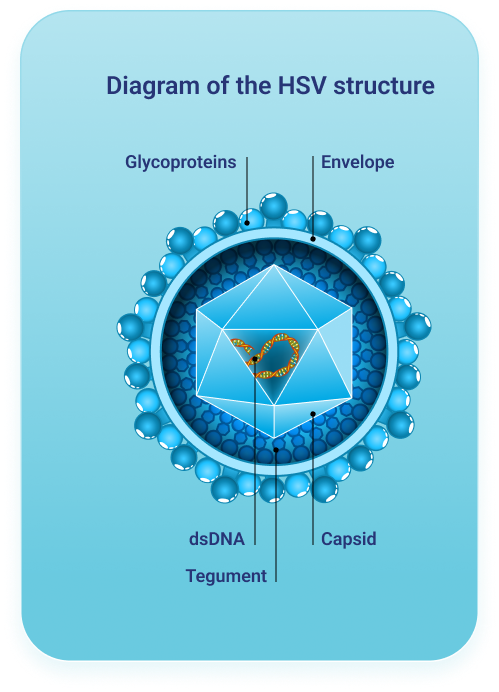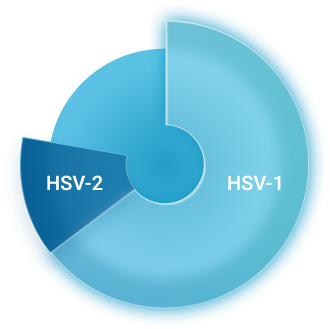Herpes simplex infections are caused by two different virus species: herpes simplex virus 1 (HSV-1) and herpes simplex virus 2 (HSV-2). The viruses show slight deviations with regards to the clinical picture and their localization. HSV-1 is primarily causing lesions in the mouth area (cold sores) triggered by an oral-to-oral contact transmission. HSV-1 can also manifest itself in the genital region through oral-genital contact transmission. According to WHO, the number of genital herpes infection caused by HSV-1 is on the rise, with an increasing number of cases reported every year. Most genital herpes infections are however still caused by HSV-2. The infection itself is almost exclusively sexually transmitted. Genital herpes infection can cause recurring, often painful, genital sores in a proportion of those infected. Besides the physical symptoms, the burden also lies in the psychological complication of the disease associated with the negative stigma of genital herpes. Globally, more than half a billion people are suffering from genital herpes infection.
According to the WHO, an estimated 491.5 million people were living with HSV-2 infection in 2016, equivalent to 13.2% of the world’s population (aged 15 to 49 years). Amongst the 491.5 million, approximately 190 million people suffered from at least one episode of herpes related genital ulcer disease in 2016, which were mainly caused by HSV-2. Such episodes can frequently recur over many years. No curative treatments or vaccines are available for any type of herpes simplex to date. At present, HSV episodes are being treated with nucleoside analogues (NUCs), such as valaciclovir, acyclovir or famciclovir. NUCs may reduce the duration of symptoms by approximately one to two days but do not affect the frequency of subsequent recurrences. The WHO emphasized the need to develop better treatment and prevention measures for HSV patients. The team of Innovative Molecules dedicates its efforts to the development of IM-250 as an oral treatment for genital herpes. Development in other indications may possibly commence at a later stage.


of the world`s population is infected with
of the world`s population is infected with

Сold sores

Genital sores

Stromal keratitis

Herpes Encephalitis

Neonatal HSV Infection

Disseminated HSV Infection

520 million people globally are
infected with HSV-2, the main cause of
genital herpes1

205 million people aged 15-46
experienced ≥ one symptomatic episode
of
genital herpes in 2020 worldwide1

50 million people, or abour 1 out of
6 people in U.S. have genital herpes2
